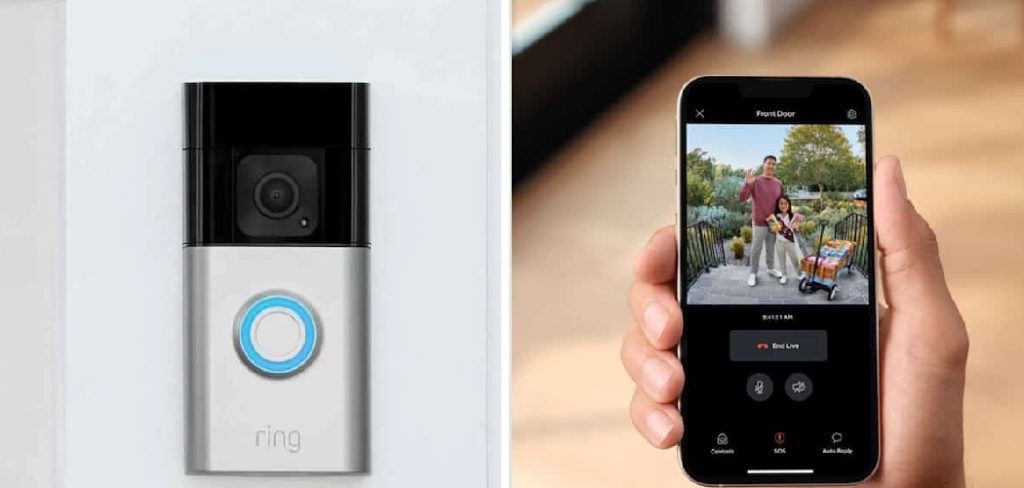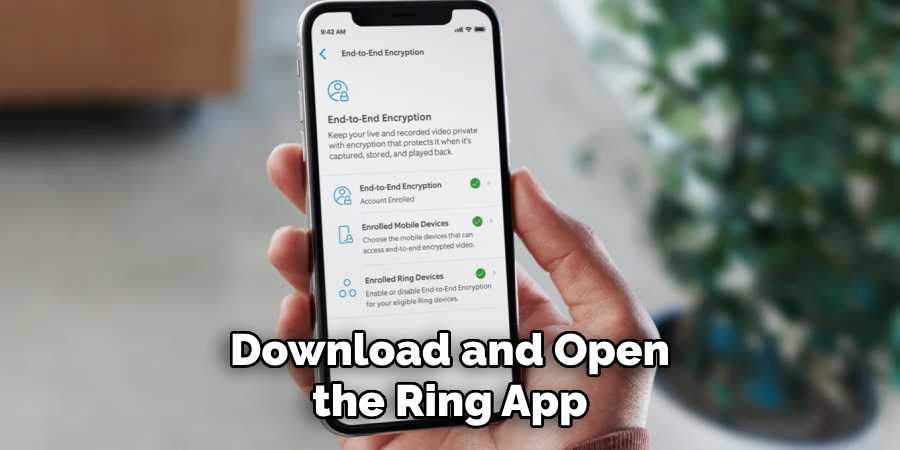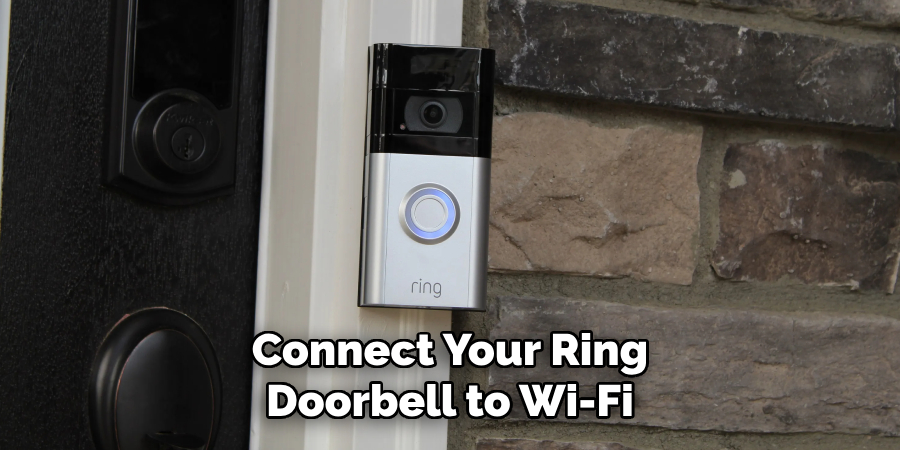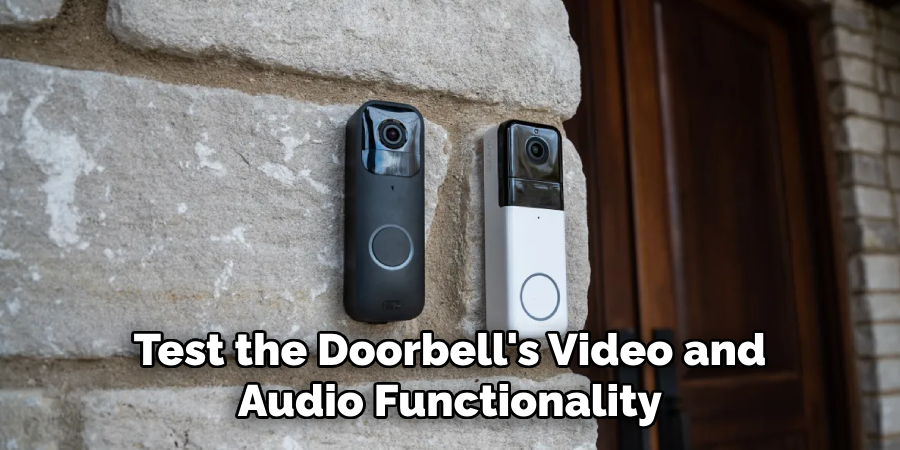Are you wondering how to set up your Ring doorbell, which has already been installed? Look no further!

How to set up Ring Doorbell that is already installed can be a straightforward process, allowing you to fully utilize its features for enhanced home security. Whether you’ve recently moved into a home with an existing doorbell or want to reconfigure yours, knowing how to set it up effectively is crucial. Following a few simple steps, you can ensure the device is properly connected to your Wi-Fi network, configured within the Ring app, and ready to notify you of any activity at your doorstep.
With a functioning Ring Doorbell, you’ll gain peace of mind knowing you’re connected to your home’s security from virtually anywhere.
What Will You Need?
Before starting the setup process, ensure you have all the necessary tools. Here’s a list of items you will need:
- Your Ring Doorbell device
- A smartphone or tablet with the latest version of the Ring app installed
- A stable Wi-Fi connection
- A screwdriver (if your doorbell needs to be mounted)
Now that you have everything ready let’s dive into the steps to set up your Ring Doorbell.
10 Easy Steps on How to Set Up Ring Doorbell That is Already Installed
Step 1: Download and Open the Ring App
First, ensure your smartphone or tablet is equipped with the latest version of the Ring app. You can download the app from either the Apple App Store or Google Play Store, depending on the operating system of your device. Once the download is complete, open the Ring app and create an account if you don’t already have one. If you use an existing account, simply log in with your credentials. The Ring app is your primary interface for setting up and managing your Ring Doorbell, where you will receive notifications and alerts. This step ensures that you’re ready to link your device to all available functionalities and personalize your security settings.

Step 2: Set Up Your Location
After logging into the Ring app, you will be prompted to input your location. This step is crucial because it affects the features and alerts available, such as motion notifications and your device’s timezone settings. Grant the app permission to access your location or manually enter your address. Providing accurate location information helps ensure that your Ring Doorbell operates effectively and provides timely alerts relevant to your area. Additionally, setting your location allows the app to offer location-specific features, optimizing your doorbell’s performance.
Step 3: Connect Your Ring Doorbell to Wi-Fi
Once your location is set, connecting your Ring Doorbell to your home Wi-Fi network is the next essential step. In the Ring app, navigate to the “Devices” section and select your specific Ring Doorbell from the list. The app will guide you through entering your Wi-Fi credentials. Ensure your device is within range of your Wi-Fi router to prevent connectivity issues. When prompted, select your Wi-Fi network and enter the password. A successful connection will allow your Ring Doorbell to send real-time notifications and access live video streams, ensuring you remain informed of any activity at your front door.

Step 4: Test the Doorbell’s Video and Audio Functionality
With your Ring Doorbell connected to the Wi-Fi, it’s essential to ensure that video and audio functionalities are working correctly. In the Ring app, locate the “Live View” option, which allows you to access a real-time video feed from your doorbell. Check the clarity of the video and confirm that the audio is clear by speaking through the two-way communication feature and listening for the response. Testing these functions ensures that when someone is at your door, you can see and interact with them effortlessly. Troubleshoot any issues by checking your Wi-Fi connection, updating your Ring app, or consulting the in-app help resources.
Step 5: Customize Motion Settings
After verifying your Ring Doorbell’s video and audio functionality, the next step is to customize motion settings within the Ring app. Tap on your device in the app and navigate to the “Motion Settings” menu. Here, you’ll find options to adjust motion zones and sensitivity, allowing you to tailor the device alerts to your needs. Choose which areas you want to monitor by setting motion zones, and decide how sensitive the device should be to motion. By fine-tuning these settings, you can minimize false alerts and ensure you are only notified about significant activity in the designated areas.

Step 6: Set Up Alerts and Notifications
Once you have customized your motion settings, configure how you would like to receive alerts and notifications. In the Ring app, access your device’s “Alert Settings” menu. You can receive push notifications directly on your smartphone or tablet whenever the doorbell is detected or the motion is pressed. Additionally, you can enable email notifications for further updates. By managing these alert options, you ensure that you’re aware of any activity occurring at your door and can also prevent unnecessary notifications during certain times or days. Adjusting these settings allows you to stay connected to your home’s security in a way that suits your lifestyle.
Step 7: Add Shared Users
If you want others in your household to have access to the Ring Doorbell, you can add shared users through the Ring app. Navigate to the “Shared Users” option under your device’s settings. Here, you can send invitations to family members or trusted individuals by entering their email addresses. Shared users can receive alerts, view live footage, and adjust some settings, but they won’t have full control over the device. This feature benefits households where multiple people need access to your home’s security details.
Step 8: Update Device Firmware
Ensuring your Ring Doorbell operates smoothly requires always having the latest firmware. Regular firmware updates provide essential improvements and new features while addressing security vulnerabilities. Check for updates by selecting your device in the Ring app and navigating to the “Device Health” section. If an update is available, follow the prompts to install it. Connecting your device to a power source before starting the update is advisable to avoid any interruptions. You are keeping your firmware up-to-date guarantees optimal performance and security for your Ring Doorbell, offering peace of mind about your home’s safety.
Step 9: Troubleshoot Common Issues
Even with a well-configured Ring Doorbell, you may occasionally encounter technical issues. If the device is not responding or experiencing connectivity problems, perform basic troubleshooting steps. Begin by checking your Wi-Fi connection strength; ensure the router is operational and the doorbell is within range. If the video feed is lagging or missing, try restarting the device through the Ring app by accessing the “Device Health” section. Additionally, ensure the app is up-to-date, as outdated versions might cause compatibility issues. For persistent problems, consult the Ring support center or use in-app resources to find solutions.
Step 10: Finalize Your Setup and Secure the Device
Once you have completed all the previous steps, it is crucial to finalize your Ring Doorbell setup and ensure it is physically secure. Begin by double-checking that the device is firmly mounted in its designated location and that all screws are tightly fastened to prevent tampering or accidental dislodgement. Consider utilizing additional security accessories, such as a theft-prevention mounting plate. It’s also a good idea to familiarize yourself with the security features available in the Ring app, including device-specific security alerts and advanced encryption options. By securing both the physical device and its digital interface, you can confidently rely on your Ring Doorbell to protect your home.
With these 10 steps, you can easily set up and customize your Ring Doorbell for optimal performance. Remember to check and update your device regularly, troubleshoot any issues, and secure both the physical device and its digital interface to ensure reliable home security.
You Can Also Check To Stop a Safe From Beeping

What are the Benefits of Using a Ring Doorbell?
There are several benefits to using a Ring Doorbell for your home security needs. Some of these include:
- Increased Visibility: The live video feed feature lets you see who is at your door even when you’re not home.
- Two-way Communication: Two-way audio allows you to communicate with visitors or delivery personnel, enhancing convenience and safety.
- Motion Detection: The motion sensor alerts you whenever there’s activity at your door, providing real-time updates on potential threats or suspicious behavior.
- Customizable Settings: You can adjust the motion zones and sensitivity levels to cater to your needs and minimize false alarms.
- Remote Access: The smartphone app allows you to access and control your Ring Doorbell from anywhere, giving you peace of mind even when you’re away from home.
- Easy Installation: The Ring Doorbell can be installed without special tools or wiring, making it a convenient and straightforward DIY project.
- Affordability: Compared to other home security options, the Ring Doorbell is relatively affordable, with no monthly subscription fees.
Conclusion
How to set up ring doorbell that is already installed is a straightforward process designed to enhance your home’s security with ease.
Begin by verifying that the device is mounted correctly and securely fastened in its position. Next, ensure the Ring app is downloaded on your smartphone or tablet to establish a seamless connection with the device. Follow the app’s instructions to connect your device to your Wi-Fi network, allowing real-time video feeds and notifications. Customize the settings to suit your preferences, including motion detection zones and alert preferences. Regularly update the device’s firmware and troubleshoot any issues to maintain optimal performance.
Following these steps ensures that your Ring Doorbell operates efficiently, providing reliable security and peace of mind.
About
Safety Fic is a distinguished figure in the world of Diy design, with a decade of expertise creating innovative and sustainable Diy solutions. His professional focus lies in merging traditional craftsmanship with modern manufacturing techniques, fostering designs that are both practical and environmentally conscious. As the author of diy, Safety Fic delves into the art and science of Safety Fic-making, inspiring artisans and industry professionals alike.
Education RMIT University
(Melbourne, Australia) Associate Degree in Design (Safety Fic) Focus on sustainable design, industry-driven projects, and practical craftsmanship. Gained hands-on experience with traditional and digital manufacturing tools, such as CAD and CNC software.
Nottingham Trent University
(United Kingdom) Bachelor’s in diyfastly.com and Product Design (Honors) Specialized in product design with a focus on blending creativity with production techniques. Participated in industry projects, working with companies like John Lewis and Vitsoe to gain real-world insights.
Publications and Impact
In diy, Safety Fic his insights on indoor design processes, materials, and strategies for efficient production. His writing bridges the gap between artisan knowledge and modern industry needs, making it a must-read for both budding designers and seasoned professionals.
